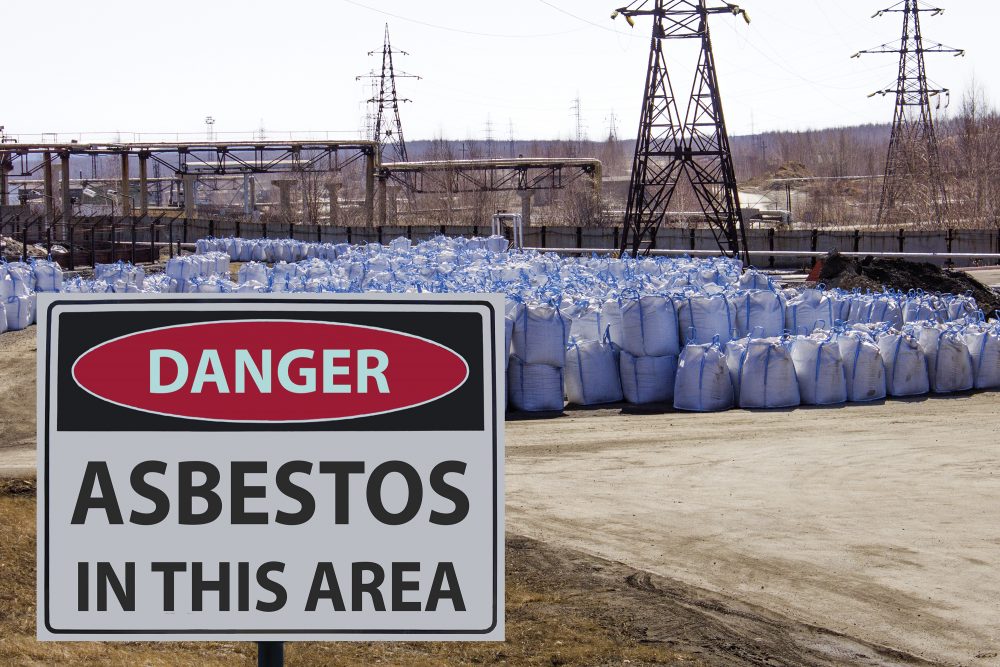
New CSA report urges national standard for managing asbestos
July 19, 2021
By
Troy Winters
Once hailed as a miracle material, exposure to asbestos is known to cause mesothelioma

Asbestos has been widely used in a range of industries for over a century, because of its resistance to heat and corrosion. (Stanislav/Adobe Stock)
In 2018, the Canadian government made it illegal to import, manufacture, sell, trade or use products that are made with or contain asbestos.
The asbestos ban didn’t make it all disappear. Asbestos continues to be a significant workplace hazard, with thousands exposed and hundreds killed from exposure each year.
Even before the ban, use of asbestos containing materials in Canada had been on the decline; however, the threat of legacy material in workplaces remains.
CAREX Canada, a group formed to help reduce Canadians’ exposures to carcinogens and reduce the risk of cancer, estimates that approximately 152,000 Canadians are exposed to asbestos in the workplace.
Asbestos has been widely used in a range of industries for over a century. Because of its resistance to heat and corrosion, asbestos has been used in at least 3,000 products ranging from brake linings to ironing board covers and children’s toys and, most importantly for workers today, has been used in a wide variety of ways (woven, moulded and sprayed) in a great number of construction materials.
Though it was once hailed as a miracle material, exposure to asbestos is known to cause mesothelioma, a type of cancer almost exclusively associated with asbestos exposure.
Asbestos can also cause asbestosis, an irreversible disease of the lungs which causes scarring of the lungs, making it difficult to breathe that often progresses to disability and death.
Asbestos is also linked to other cancers such as ovarian, esophagus, stomach, the large intestine and rectum and increases the likelihood of other types of lung cancer.
While regulations exist in every jurisdiction to help protect workers from exposure, there are significant gaps.
Recently, the research division of the Canadian Standards Association released a very compressive report that reviews the history of asbestos and its related diseases, the overall processes for how asbestos has been managed and an provides and extensive review and assessment of the of the regulatory framework for asbestos management in Canada.
Most importantly, the report identifies gaps and inconsistencies that speak to the need for broad national standards on numerous topics including:
Jurisdictional responsibility: Legislative responsibility and oversight of the different aspects of asbestos management are divided between different federal departments, and also spread over provincial, territorial, and municipal authorities (including 13 health and safety jurisdictions). Standard harmonization could reduce challenges for all employers and reduce enforcement challenges for regulators.
Asbestos definitions: Because of the multi-jurisdictional rules, there are conflicting definitions of what constitutes asbestos and asbestos containing materials which complicates the identification and documentation of asbestos. Disagreements over what constitutes asbestos also creates challenges in the hazard removal, assessment of risk, the selection of appropriate control measures, and the safe disposal of asbestos waste.
Training: There is no national standard for workers who are required to work around asbestos, or to work to remove asbestos.
Awareness: There is very limited public and worker awareness about the presence of asbestos in the buildings that we live, work and use for recreation. Few jurisdictions require tracking outside of OH&S inventories, so asbestos is inadequately documented. The lack of knowledge increases the risk for people who live and work in these buildings to be exposed.
To download and read the full report please click here, or copy and paste to following address into your we browser: https://www.csagroup.org/article/research/asbestos-management-in-canada-assessing-the-need-for-a-national-standard/.
Troy Winters is the Senior Health and Safety Officer at the Canadian Union of Public Employees (CUPE) in Ottawa, and chair of the CSA OHS Strategic Steering Committee. For more information, visit https://cupe.ca/health-and-safety.